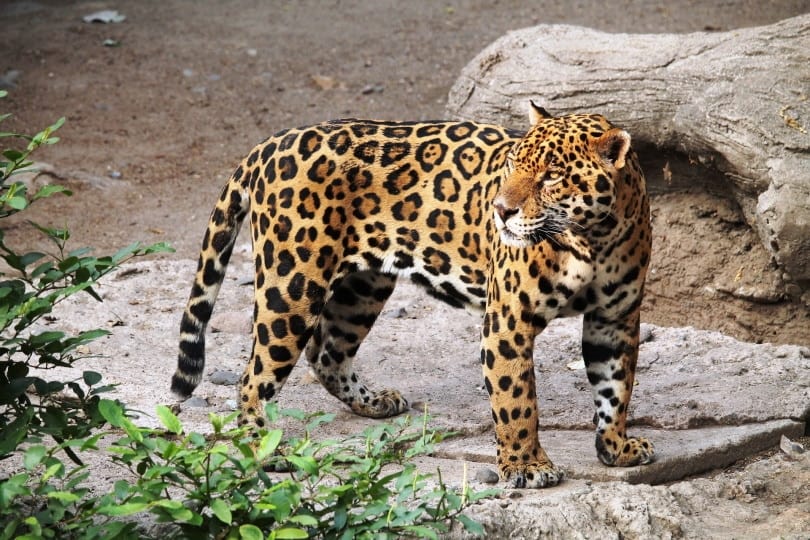Arizona is best known for the Grand Canyon, but it’s also home to many habitats, from deserts and forests to mountain ranges. The range of habitats also provides a home to plenty of wildlife. Among the array of creatures living alongside humans in the state are various predators, including wild cats.
Besides the Cougar and Bobcat, which are common throughout the U.S.A., there are also the less common Jaguar and Ocelot that are occasionally spotted in the southern parts of Arizona. This list describes each wild cat that you can find in Arizona to introduce you to each species and goes over how to keep your pets and yourself safe.

The 4 Wild Cats in Arizona
1. Bobcat
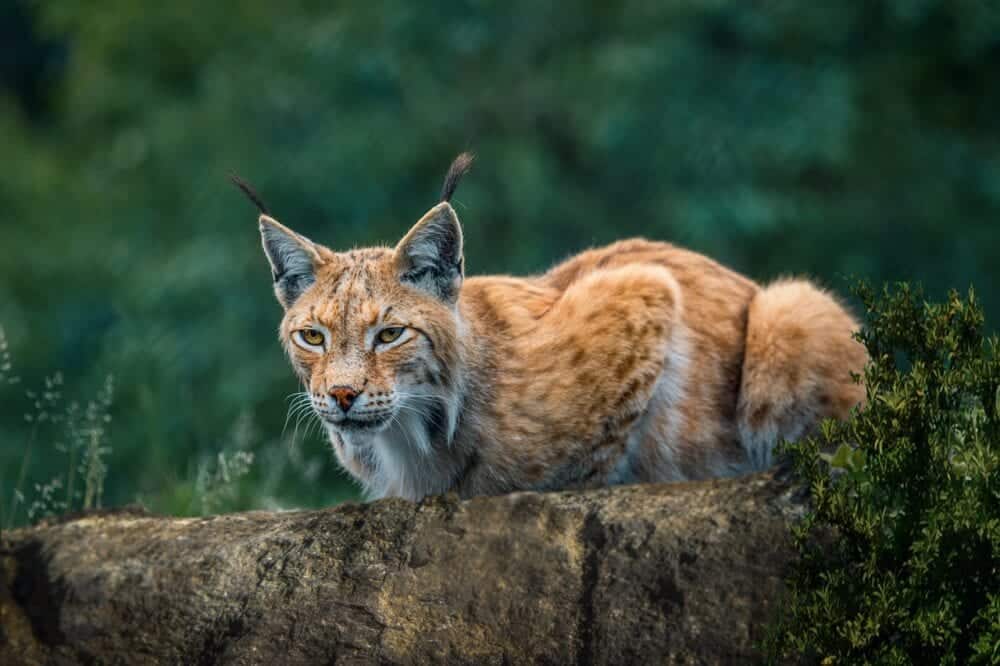
| Scientific Name: | Lynx rufus |
| Other Names: | Wildcat, Bay Lynx |
| Habitat: | Sonoran desert, rimrock, chaparral areas, suburban areas |
As one of the most prevalent wild cats throughout the U.S.A., it’s no surprise that you can find Bobcats in Arizona too. They’re easily recognized by their tan-colored fur with dark spots; longish, bobbed tails; ear tufts; and fluffy jowls.
Although they’re found throughout the state, at high and low elevations, the Bobcat often favors areas with readily available food. They often frequent suburban areas in search of food and may find shelter in the bushes in your backyard. Like domestic cats, the Bobcat is a renowned jumper, which can make securing your yard against them difficult.
Since they mostly prey on small animals, Bobcats don’t often attack humans and prefer to hunt birds or rodents. Small pets and livestock such as chickens are most at risk from Bobcats. You’ll see these cats most often during dawn and dusk, when they’re more active.
2. Mountain Lion
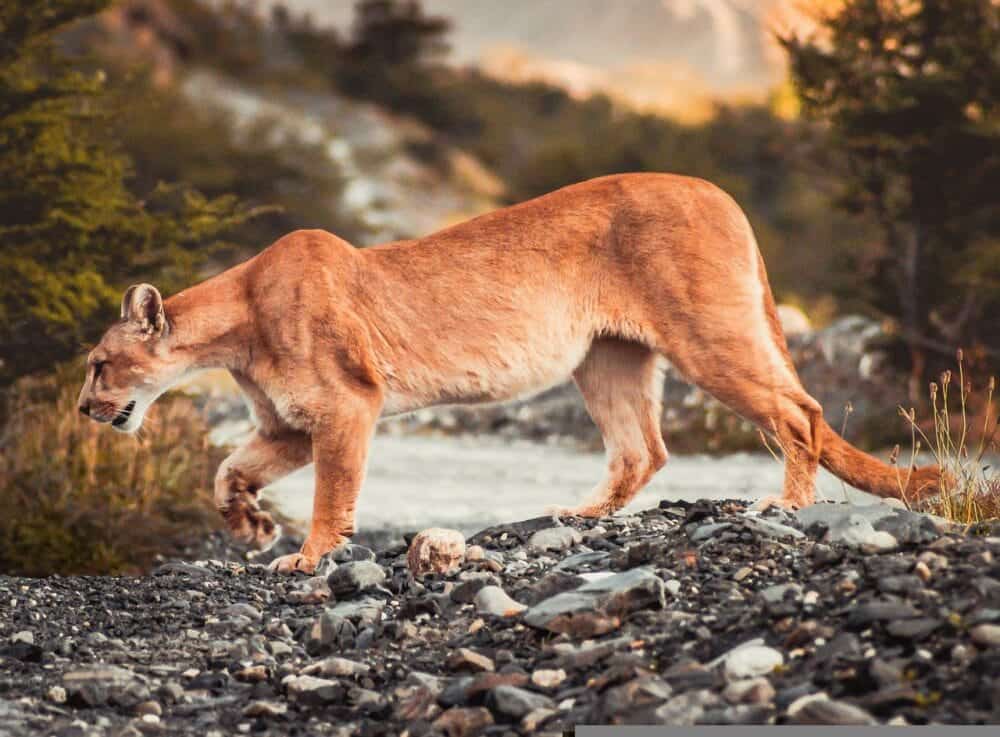
| Scientific Name: | Puma concolor |
| Other Names: | Puma, Panther, Cougar |
| Habitat: | Deserts, mountains, lowlands, forests, canyons, prairie land, areas with dense vegetation |
Like the Bobcat, the Mountain Lion makes their home throughout the U.S.A., particularly in the western states. While their smaller counterparts often linger around urban areas, the Cougar prefers to stay away from humans and primarily resides in rural areas with plenty of dense vegetation or cover.
This avoidance of humans and their nocturnal hunting habits make them less easy to spot, but no less common. Their habitat ranges from mountainous areas and deserts to forests, canyons, and even prairie land. With their preference for covered hunting areas, the Cougar relies on ambushing their prey — most commonly deer and sometimes livestock — and then storing their kill in food caches that they’ll return to over several days.
Although they share a similar tan coloring to the Bobcat, they’re easily recognized by their rounded ears and larger body. They’re the second biggest wild cat in Arizona.
3. Jaguar
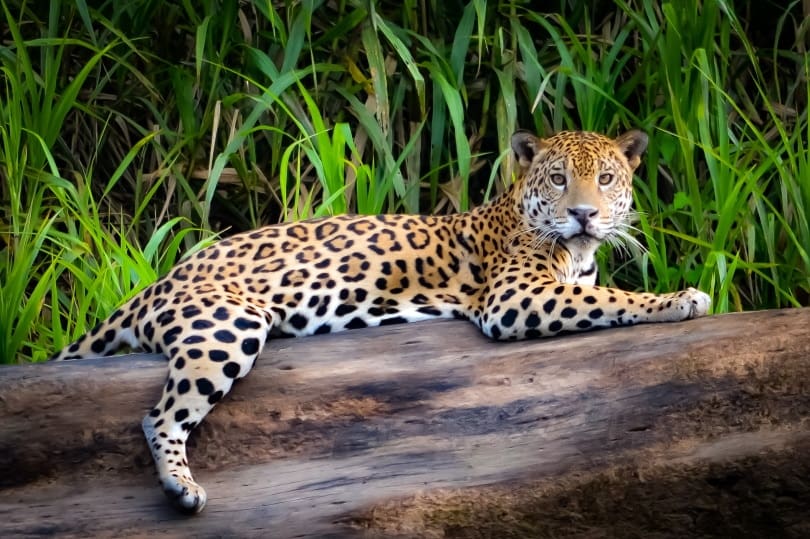
| Scientific Name: | Panthera onca |
| Other Names: | El Tigre, Tigre Americano |
| Habitat: | Forests, wetlands |
The third-largest cat in the world, the Jaguar is recognized by their size and the exotic rosette patterning of their coat. Unlike Cougars, which aren’t considered “big cats” despite their size, the Jaguar is part of the Panthera genus and classed as a big cat, or “roaring cat.” It’s the only official big cat found in the U.S.A.
Jaguars are often believed to reside solely in Mexico, Central, and South America. However, they are also native to the southern U.S.A., particularly Arizona, Texas, and New Mexico, although they are far less common than Bobcats and Cougars.
Due to deforestation, trophy hunting, and poaching, most of the Jaguar population is found in the Amazon River basin rather than Arizona, and they’re considered near threatened by the IUCN. The most well-known U.S. Jaguar, El Jefe — or “The Boss” — was sighted in Arizona in recent years.
4. Ocelot
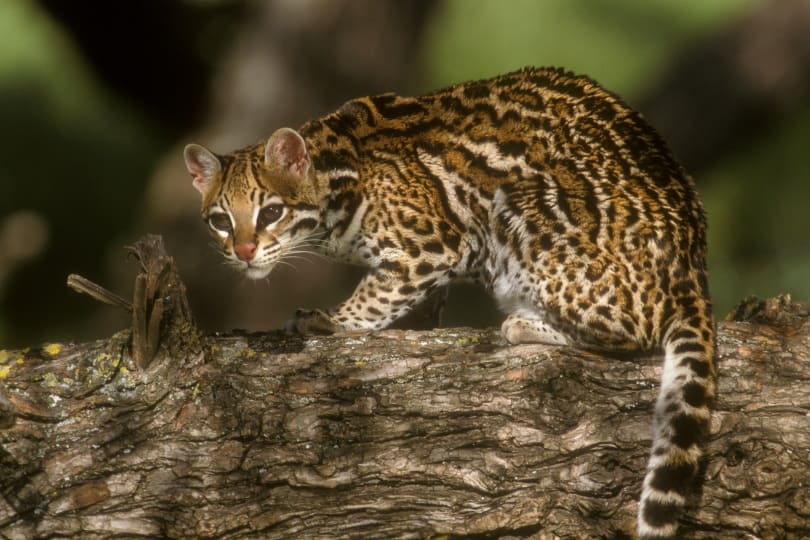
| Scientific Name: | Leopardus pardalis |
| Other Names: | None |
| Habitat: | Mangroves, high-altitude forests, areas with dense vegetation, prairie land |
Although the Ocelot shares similar patterning and distribution as the Jaguar, they’re much closer in size to the Bobcat than they are to their big cat counterpart. Like the Jaguar, though, their presence in Arizona is limited, and they’re more commonly found in Central and South America, with a small population in Mexico. They are, however, considered less endangered than the Jaguar by the IUCN.
Along with being hunted for their fur, the Ocelot is commonly sold as pets to tourists in parts of South America, although they are banned in Arizona.
Adopting similar hunting tactics as the Cougar and the Jaguar, the Ocelot prefers dense vegetation. They’re much more able to adapt to disturbed habitats and have been spotted in open fields under the cover of moonless nights or cloudy skies.

Can You Find Jaguarundi in Arizona?
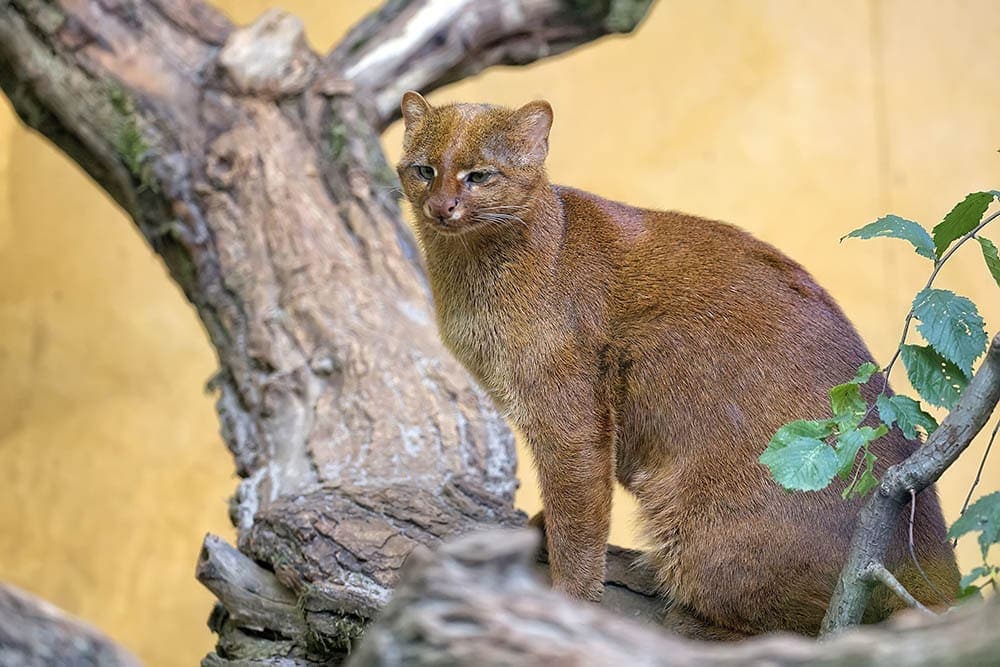
Compared to the other wild cats in Arizona, the Jaguarundi is perhaps the one with the strangest, least cat-like appearance. With a preference for low altitudes, the Jaguarundi is mostly found below 2,000 meters in Mexico, Central, and South America.
There have been sightings of the wild cat throughout the state, but there’s no real evidence that they do reside in the wilderness of Arizona.
How to Stay Safe Around Wild Cats
Most of the time, wild cats prefer to stay out of our way. That said, they can be dangerous when they feel threatened and do pose a threat to livestock, pets, and sometimes children.
Fences around your backyard might not keep wild cats at bay — especially Bobcats due to their jumping ability — but you can ward them off or make your yard less attractive to them. Ensure that animal barns don’t back onto forested land or an area with dense vegetation. The idea is to provide as minimal coverage as possible to prevent a wild cat from lying in wait to prey on your livestock or pets.
You should also avoid leaving food around, including outdoor pet bowls, as these can attract all sorts of animals to your back door.
Pay attention during hikes. Most wild cats hunt during dawn or dusk, so it’s best to avoid these hours, especially if you’re hiking alone. If you do come across a wild cat, don’t corner it but back away slowly. Don’t run or turn your back, as you may trigger their hunting instinct.
If they’re aggressive, create noise and make yourself look as big as possible. The more threatening you can make yourself appear, the less likely they are to see you as prey.
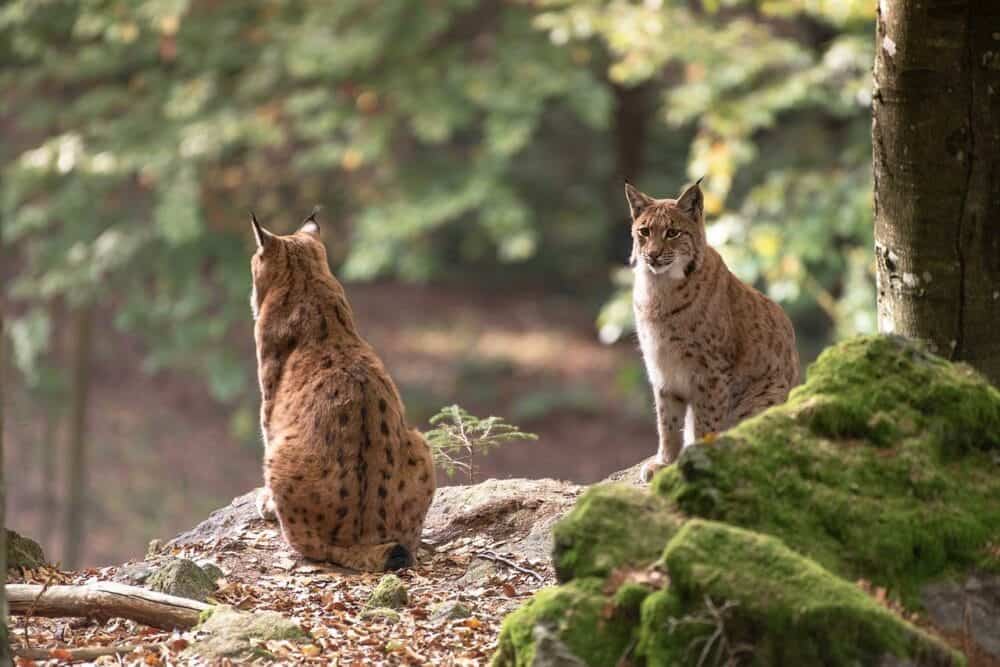

Conclusion
Arizona is home to a variety of wildlife, including wild cats. These cats might not be as common a sight as backyard birds, but there are plenty of places in Arizona that provide the perfect hunting ground for these predators. Whether you’re curious about the elusive Jaguar or the suburbia-visiting Bobcat, we hope that this guide helps you keep your livestock, pets, and yourself safe.
See Also:
Featured Image Credit: carloroberto9, Pixabay
